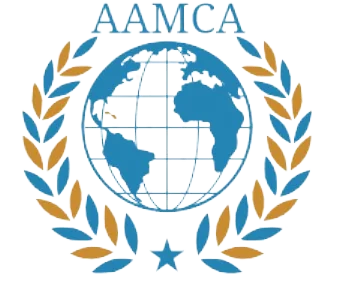Overview of Trafficking Trends
The 2024 UNODC Global Human Trafficking Report reveals alarming trends that underscore the increasing prevalence of human trafficking worldwide. Notably, there has been a 25 percent increase in detected trafficking victims globally from 2019 to 2022. This statistic not only highlights the growing issue but also reflects the need for more comprehensive measures to combat this illicit activity. Among the various forms of trafficking, child exploitation stands out as particularly troubling, with a significant rise in the number of minors falling victim to such heinous acts.
Child trafficking has escalated drastically, with reports indicating that a substantial proportion of trafficking victims are younger individuals who are exploited for various purposes, including labor and sexual exploitation. Furthermore, the phenomena of forced labor and forced criminality have emerged as pressing issues. Victims are increasingly found enduring harsh conditions and being coerced into illegal activities, exacerbating their plight. The interplay of economic and social factors contributing to this trend can be traced back to underlying issues such as poverty, conflict, and climate change, which continue to destabilize communities across the globe.
The implications of these trends extend beyond mere statistics; they represent a humanitarian crisis that demands urgent attention. Governments, international organizations, and civil society must collaborate to design and implement effective interventions aimed at prevention and victim support. As the data reveal, the conditions fueling human trafficking are complex and multifaceted, calling for a comprehensive response that addresses not only the symptoms but also the root causes. This underscores the critical need for international solidarity and commitment to end human trafficking, particularly concerning the vulnerable population of children who are disproportionately affected by this tragic global issue.
Impact of Armed Conflict and Climate Change
The interplay between armed conflict and climate change significantly exacerbates vulnerabilities to human trafficking, particularly among children. Armed conflicts create instability, displacing populations and breaking down social structures that typically provide protection to the most vulnerable. Children caught in these tumultuous environments often find themselves without adequate shelter, food, or safety, making them prime targets for traffickers seeking to exploit their precarious circumstances.
In regions afflicted by conflict, such as Syria and Afghanistan, reports indicate a disturbing increase in the trafficking of children for forced labor, sexual exploitation, and recruitment into militias. These children frequently face dire situations filled with threats, violence, and a lack of access to essential services. Furthermore, armed conflicts can lead to prolonged humanitarian crises, which in turn exacerbate the effects of climate change. Natural disasters associated with climate change, such as floods and droughts, further contribute to displacement and instability, perpetuating a cycle of vulnerability.
Geographically, areas heavily impacted by both armed conflict and climate change, such as sub-Saharan Africa and parts of the Middle East, are witnessing alarming trends in child exploitation. In these regions, climate-induced factors such as water scarcity and food shortages can lead families to make desperate decisions, such as sending children away, which traffickers exploit. The prevalent forms of exploitation in these contexts include not only forced labor and sexual exploitation but also child marriage, as families may view this as a means of economic survival.
This tragic intersection of environmental degradation and humanitarian crises highlights the urgent need for comprehensive strategies to combat human trafficking. Addressing the root causes of armed conflict and climate change is essential for safeguarding vulnerable populations, particularly children. As these global crises continue to unfold, understanding their implications for trafficking is critical in fostering effective responses to protect those at risk.
Demographic Trends in Trafficking Victims
The analysis of demographic trends among trafficking victims reveals significant disparities, particularly in terms of gender and age. Data from the 2024 UNODC Global Human Trafficking Report indicates that women and girls constitute a considerable portion of trafficking victims, particularly within the context of sexual exploitation. This alarming trend underscores the vulnerability of these groups, who are often targeted due to systemic inequalities and socio-economic factors. As sexual exploitation remains one of the most prevalent forms of trafficking, it is essential to acknowledge the factors contributing to this disproportionate victimization.
Moreover, recent findings highlight a concerning increase in the number of boys being trafficked. Traditionally viewed as a predominantly female issue, human trafficking is evolving, and young males are increasingly falling prey to various forms of exploitation, including forced labor and sexual exploitation. This shift may be attributed to a range of motivators, such as economic necessity or the desperate circumstances stemming from regional conflicts and displacement. The motivations differ between genders, as boys may be lured by promises of employment or better living conditions, which ultimately result in their exploitation.
The different forms of exploitation affect victims in distinct ways, with each demographic group facing unique challenges. For instance, girls often endure sexual violence and emotional trauma, while boys may encounter harsher physical conditions during forced labor situations. Understanding these disparities is critical for effectively addressing the needs of various victim demographics. Overall, the demographic landscape of trafficking victims illustrates a complex scenario that requires targeted interventions and tailored support systems to combat this rising concern of child exploitation.
Policy Recommendations and Future Directions
Addressing the multifaceted issue of human trafficking, especially concerning child exploitation, necessitates a comprehensive approach that focuses on strengthening policies at both national and international levels. The 2024 UNODC Global Human Trafficking Report emphasizes several strategic recommendations aimed at significantly enhancing the global response to this grave concern.
First and foremost, the report highlights the critical need for **international cooperation** among governments, non-governmental organizations, and civil society. Such collaboration is vital in orchestrating effective victim rescue efforts and providing essential support to survivors. By sharing resources, expertise, and information across borders, countries can create a unified front against trafficking, enabling a more robust response to this transnational crime.
Moreover, strengthening **criminal justice responses** is imperative. This includes revising laws to ensure they adequately address human trafficking’s evolving nature and establishing specialized units within law enforcement agencies dedicated to investigating these crimes. Improved training for law enforcement officials on identifying and managing trafficking cases will also enhance response efficiency, ensuring that perpetrators are held accountable while safeguarding victims’ rights and dignity.
Additionally, the need for improved **data collection** is underscored, particularly in underrepresented regions, such as Africa, where trafficking issues may be obscured by a lack of comprehensive statistics. Establishing standardized methodologies for data collection can illuminate the scope and scale of trafficking in these regions, facilitating targeted interventions and resource allocation.
Key strategies outlined in the report focus on raising public awareness, enhancing victim support services, and incorporating survivor voices in policymaking. This inclusive approach not only empowers survivors but also formulates policies that are more effective and responsive to their needs, fostering a culture of protection and rehabilitation.




